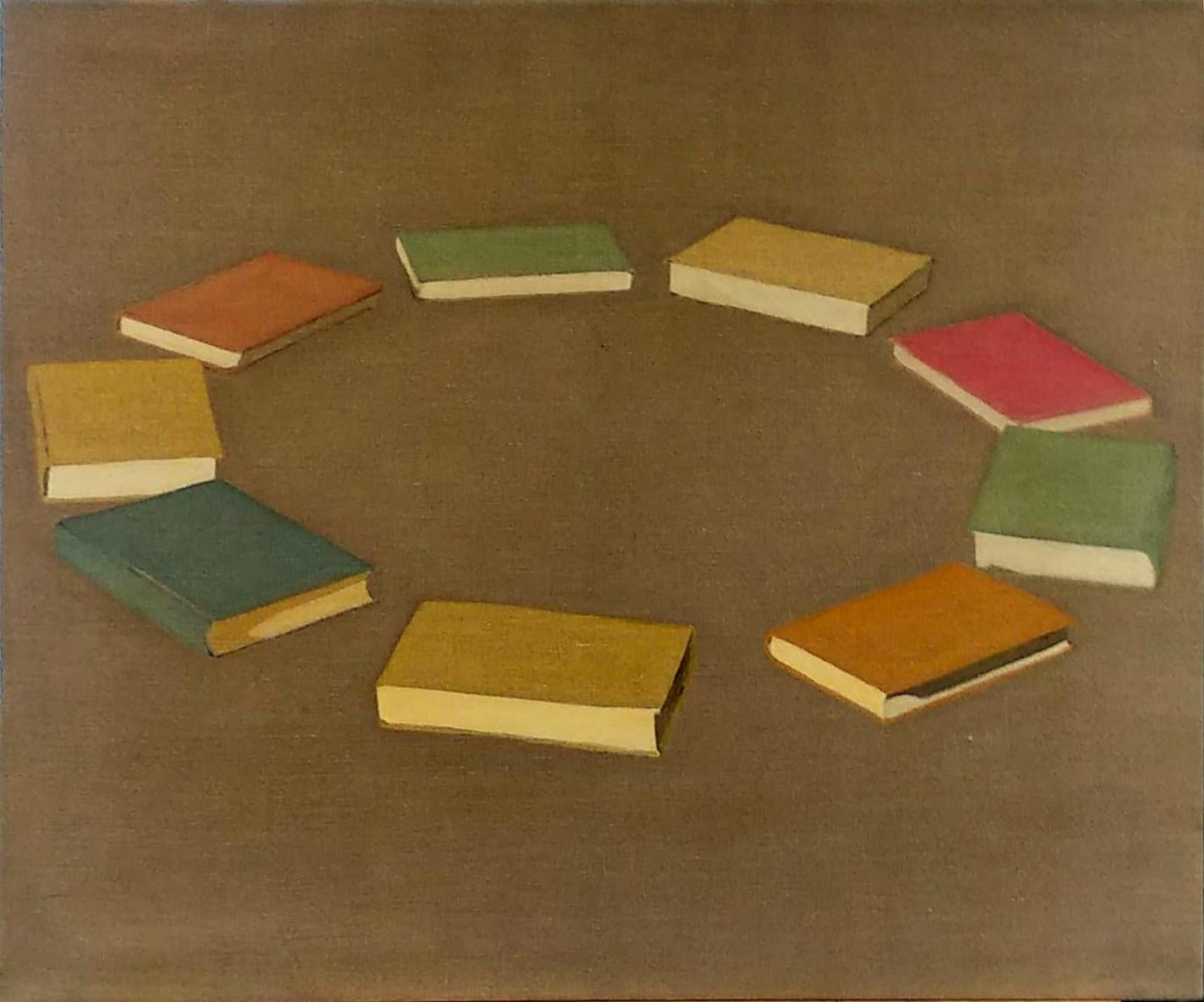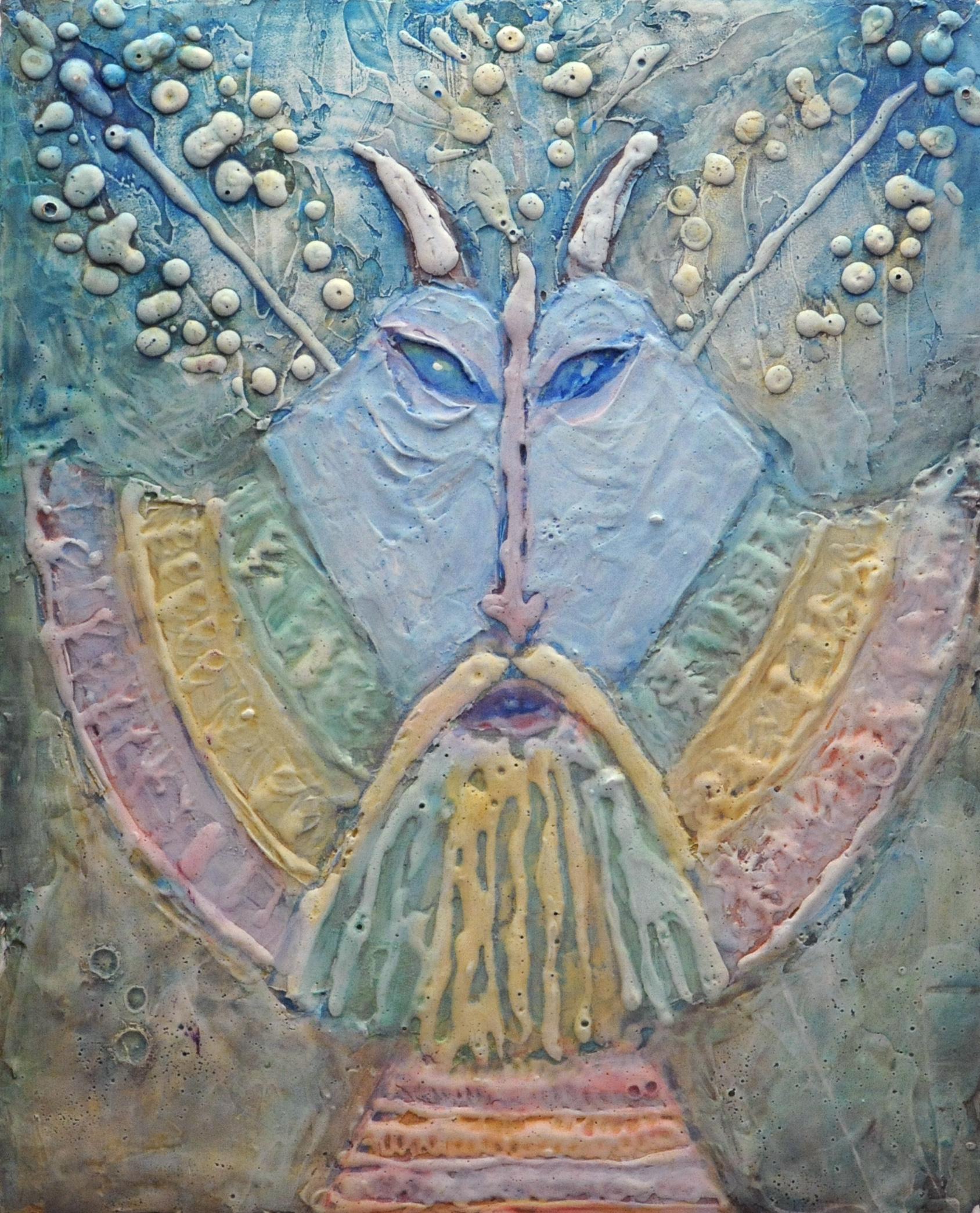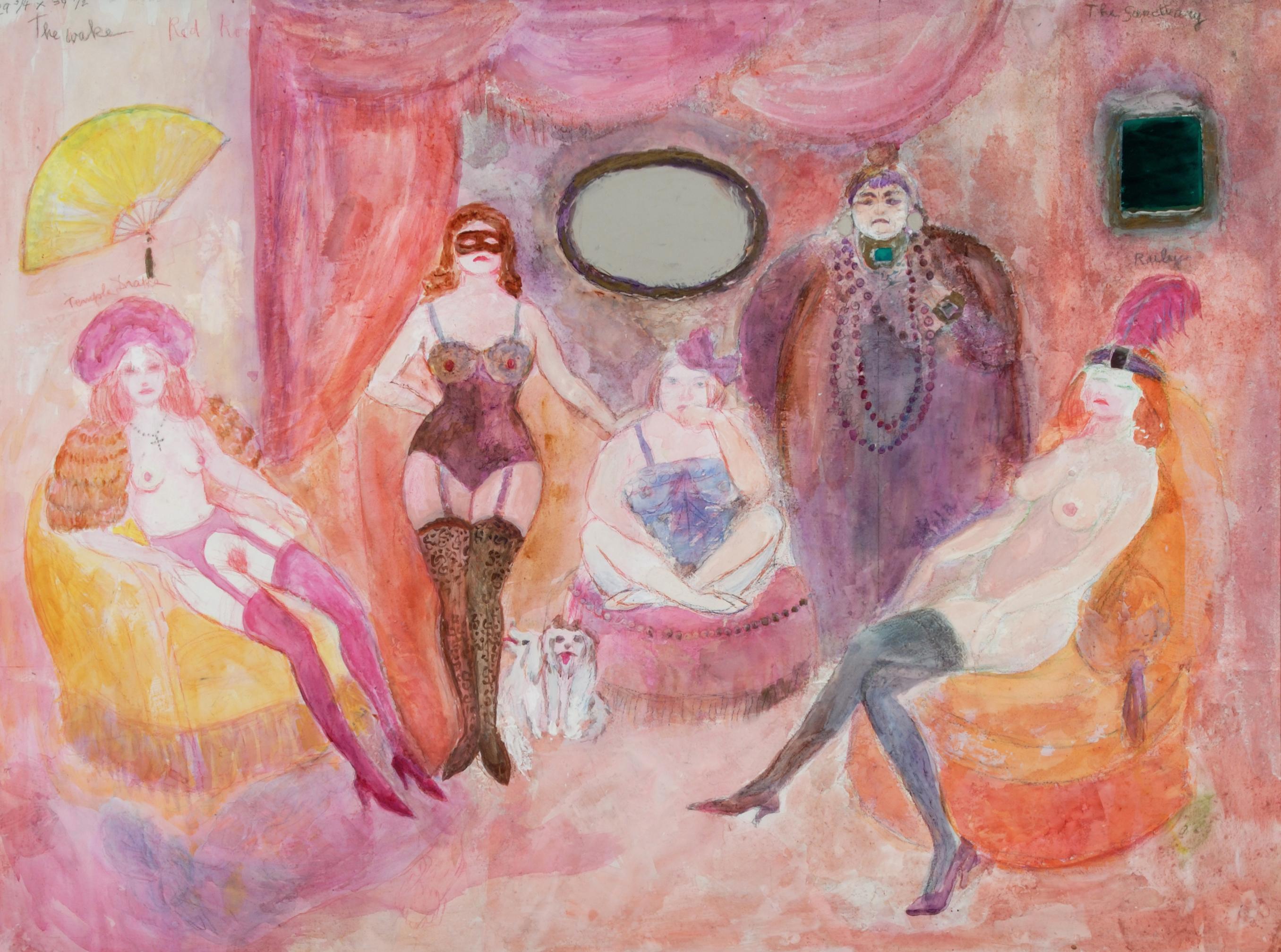Items Similar to Antique tempera painting on cardboard "Gouaches"
Want more images or videos?
Request additional images or videos from the seller
1 of 10
UnknownAntique tempera painting on cardboard "Gouaches"
About the Item
Antique Neapolitan gouches with coeval frame belonging to the early 20th century.
The scene depicts Capri's famous grotto as seen from the deepest point.
Providing a perspective background are four attentive men looking at the beauty of the cave as well as a small boat with two characters on board.
Giving depth to the entire scene is the entrance to the cave illuminated by the sun's rays.
Provenance: early 20th century Naples.
Measurements: 52x44cm.
Document: Certificate of Authenticity
Assistance: We are at your disposal for further clarification or photographic details
Shipping: Throughout Italy Europe and Rest of the World at very low prices in maximum security and traceable. Shipping will be arranged privately and will not be of high cost
We wish you a Happy Day
Borrelli Antiquities.
- Dimensions:Height: 17.33 in (44 cm)Width: 20.48 in (52 cm)
- More Editions & Sizes:52x44Price: $1,318
- Medium:
- Period:
- Condition:
- Gallery Location:Torre Del Greco, IT
- Reference Number:1stDibs: LU2682213483112
About the Seller
New to 1stDibs
Joined in the past six months.
5.0
Vetted Seller
These experienced sellers undergo a comprehensive evaluation by our team of in-house experts.
1stDibs seller since 2023
Typical response time: 1 to 2 days
- ShippingRetrieving quote...Ships From: Torre Del Greco, Italy
- Return PolicyA return for this item may be initiated within 14 days of delivery.
More From This SellerView All
- Dipinto antico olio su tela raffigurante Madonna col Bambino.Located in Torre Del Greco, ITIn questa “Madonna col Bambino”, Francesco Solimena esprime diversi elementi della sua poetica con una delicatezza pienamente rococò. Il pittore campano, variando i toni del chiaros...Category
18th Century Figurative Paintings
MaterialsCanvas
- Pair of antique oil on canvas paintings depicting young commoners signed"Located in Torre Del Greco, ITPair of antique oil on canvas paintings with coeval frame signed Antonio Vallone, a Neapolitan painter close to the school of Morelli, specialized in genre portraits, especially of s...Category
20th Century Figurative Paintings
MaterialsCanvas
- Antique Neapolitan oil on canvas painting depicting the allegory of summer.Located in Torre Del Greco, ITThis important eighteenth-century painting can be attributed to the exquisite production of the Neapolitan school of the first half of the eighteenth century. Indeed, the splendid w...Category
Early 18th Century Figurative Paintings
MaterialsCanvas
- Antique oil on canvas painting depicting "Clopatra".Naples 19th century.Located in Torre Del Greco, ITAntique oil-on-canvas painting depicting the most fascinating female protagonist in History, a symbol of beauty and seduction, is depicted here bare-breasted holding a snake ,in a se...Category
Late 19th Century Figurative Paintings
MaterialsCanvas
- Dipinto antico olio su tela raffigurante il Martirio di San Sebastiano.Located in Torre Del Greco, ITDipinto antico olio su tela di provenienza Fiamminga rappresentante il Martirio di San Sebastiano. In basso in primo piano la scena del martirio: sulla destra il gruppo degli arcier...Category
Mid-17th Century Figurative Paintings
MaterialsCanvas
- Antique oil on canvas painting depicting Venus and Adonis coveted "Boucher." FranceLocated in Torre Del Greco, ITAntique oil on canvas painting depicting Venus and Adonis. The painting depicts in a sublimated atmosphere the death of Adonis, the young man loved by Venus, who was mortally wounde...Category
Mid-18th Century Figurative Paintings
MaterialsCanvas
You May Also Like
- The Resurrection of ChristLocated in New York, NYProvenance: with “Mr. Scheer,” Vienna, by July 1918; where acquired by: Jindřich Waldes, Prague, 1918–1941; thence by descent to: Private Collection, New York Literature: Rudolf Kuchynka, “České obrazy tabulové ve Waldesově obrazárně,” Památky archeologické, vol. 31 (1919), pp. 62-64, fig. 5. Jaroslav Pešina, “K datování deskových obrazů ve Waldesově obrazárně,” Ročenka Kruhu pro Pěstování Dějin Umění: za rok (1934), pp. 131-137. Jaroslav Pešina, Pozdně gotické deskové malířství v Čechách, Prague, 1940, pp. 150-151, 220. Patrik Šimon, Jindřich Waldes: sběratel umění, Prague, 2001, pp. 166, 168, footnote 190. Ivo Hlobil, “Tři gotické obrazy ze sbírky Jindřicha Waldese,” Umění, vol. 52, no. 4 (2004), p. 369. Executed sometime in the 1380s or 1390s by a close associate of the Master of the Třeboň Altarpiece, this impressive panel is a rare work created at the royal court in Prague and a significant re-discovery for the corpus of early Bohemian painting. It has emerged from an American collection, descendants of the celebrated Czech industrialist and collector Jindřich Waldes, who died in Havana fleeing Nazi-occupied Europe. The distinctive visual tradition of the Bohemian school first began to take shape in the middle of the fourteenth century after Charles IV—King of Bohemia and later Holy Roman Emperor—established Prague as a major artistic center. The influx of foreign artists and the importation of significant works of art from across Europe had a profound influence on the development of a local pictorial style. Early Italian paintings, especially those by Sienese painters and Tommaso da Modena (who worked at Charles IV’s court), had a considerable impact on the first generation of Bohemian painters. Although this influence is still felt in the brilliant gold ground and the delicate tooling of the present work, the author of this painting appears to be responding more to the paintings of his predecessors in Prague than to foreign influences. This Resurrection of Christ employs a compositional format that was popular throughout the late medieval period but was particularly pervasive in Bohemian painting. Christ is shown sitting atop a pink marble sarcophagus, stepping down onto the ground with one bare foot. He blesses the viewer with his right hand, while in his left he holds a triumphal cross with a fluttering banner, symbolizing his victory over death. Several Roman soldiers doze at the base of the tomb, except for one grotesque figure, who, beginning to wake, shields his eyes from the light and looks on with a face of bewilderment as Christ emerges from his tomb. Christ is wrapped in a striking red robe with a blue interior lining, the colors of which vary subtly in the changing light. He stands out prominently against the gold backdrop, which is interrupted only by the abstractly rendered landscape and trees on either side of him. The soldiers’ armor is rendered in exacting detail, the cool gray of the metal contrasting with the earth tones of the outer garments. The sleeping soldier set within a jumble of armor with neither face nor hands exposed, is covered with what appears to be a shield emblazoned with two flies on a white field, somewhat resembling a cartouche (Fig. 1). This may be a heraldic device of the altarpiece’s patron or it may signify evil, referencing either the Roman soldiers or death, over both of which Christ triumphs. This painting formed part of the collection assembled by the Czech industrialist and founder of the Waldes Koh-i-noor Company, Jindřich Waldes, in the early twentieth century. As a collector he is best remembered for establishing the Waldes Museum in Prague to house his collection of buttons (totaling nearly 70,000 items), as well as for being the primary patron of the modernist painter František Kupka. Waldes was also an avid collector of older art, and he approached his collecting activity with the goal of creating an encyclopedic collection of Czech art from the medieval period through to the then-present day. At the conclusion of two decades of collecting, his inventory counted 2331 paintings and drawings, 4764 prints, and 162 sculptures. This collection, which constituted the Waldesova Obrazárna (Waldes Picture Gallery), was first displayed in Waldes’ home in Prague at 44 Americká Street and later at his newly built Villa Marie at 12 Koperníkova Street. This Resurrection of Christ retains its frame from the Waldes Picture Gallery, including its original plaque “173 / Česky malíř z konce 14 stol.” (“Czech painter from the end of the 14th century”) and Waldes’ collection label on the reverse. The Resurrection of Christ was one of the most significant late medieval panel...Category
15th Century and Earlier Old Masters Paintings
MaterialsTempera, Panel
- Hanan Shlonsky, Circle of Literature, 2007 tempera on linen, 82x100 cmLocated in Jerusalem, ILHanan Shlonsky Circle of Literature, 2007 tempera on linen 82x100 cm Exhibited: Comparative Literature, 2009 Artists' House Tel-Aviv , paintings on l...Category
2010s Minimalist Figurative Paintings
MaterialsTempera, Linen
- Carpathian AncestorLocated in Washington, DCOne of a kind painting by Noche Crist (1909- 2004). Noche Crist was an American artist born in Romania. Painting is on casein paint on plaster on board. Catalogue of a postumous retr...Category
1960s Outsider Art Figurative Paintings
MaterialsCasein, Plaster, Wood
- The SanctuaryLocated in Washington, DCPainting by Noche Crist (1909 - 2004). Work is titled "The Sanctuary" and signed. Painting is casein paint and plaster on board. Catalogue of an exhibition in 2008 at the Katzen...Category
1990s Outsider Art Figurative Paintings
MaterialsMirror, Plaster, Casein, Wood Panel
- The KissLocated in Washington, DCOne of a kind shaped painting by Noche Crist (1909 - 2004). Titled "The Kiss" and signed on reverse. Painting is casein paint and plaster on board. Catalogue of an exhibition in...Category
1980s Outsider Art Figurative Paintings
MaterialsPlaster, Casein, Wood Panel
- Large Japanese Wood Board Ema Namban Depicting a Portuguese Ship Edo periodLocated in Stockholm, SEAn Ema is a votive plaque people hang in a "dedication area", at a Shinto shrine, with their wish to the gods. Wishes usually would revolve around health, love, career, prosperity, a...Category
Mid-19th Century Realist Figurative Paintings
MaterialsWood, Tempera, Egg Tempera, Wood Panel
Recently Viewed
View AllMore Ways To Browse
Speed Skater Bronze
Nude Painting Of A Boy 2019
Native War Shirt
Pain And Its Relief
Indian Print Canvas
Ruth Brown
Monaco Formula 1
Theophilus Tetteh
Anne Gerrard
Arlens Tv
Book Case Turtle
Philip Mueller
Figural Group
Postcard Box
Pot Medicis
Julian Scott
Framed Painting On Canvas Of The Vatican
Painting Egypt Nile





